The man who created The Muppets, Fraggle Rock, and Sesame Street was not only a creative genius, but also a staple in the lives of many children. You would be hard pressed to find people who grew up in the U.S. who do not have fond memories of Jim Henson’s fuzzy little friends.
However, he also gave many children nightmares. From the same mind that gave us the “Rainbow Connection,” Henson also gave us child-stealing goblin kings and dangerous Skeksis.
For many who grew up in the VHS era of the ’80s and 90’s, hidden in the back of their collection was The Dark Crystal, a movie that both frightened and enticed children with its whimsical wonder and scary monsters.
As an adventure set on the mystical planet of Thra, The Dark Crystal follows heroes Jen and Kira, elf-like Gelflings on a quest to restore balance to Thra by returning the lost shard of a powerful but broken crystal, fulfilling a thousand-year-old prophecy.
Along the way, they encounter adorable Podlings (porotypes of Minions and Ewoks), the wise Mystics, and friendly Landstrider all while being pursued by the evil Skeksis.
The Dark Crystal was an incredibly unique and ambitious project for Henson, as no one had ever done anything like it.
A live action movie starring only puppets was unprecedented and required a lot of work. There was no template for this kind of picture, so Henson had to create the rules as he went along.
With that said, here are the 20 Details Behind The Making Of The Dark Crystal!
Yoda Was Created By The Dark Crystal Team
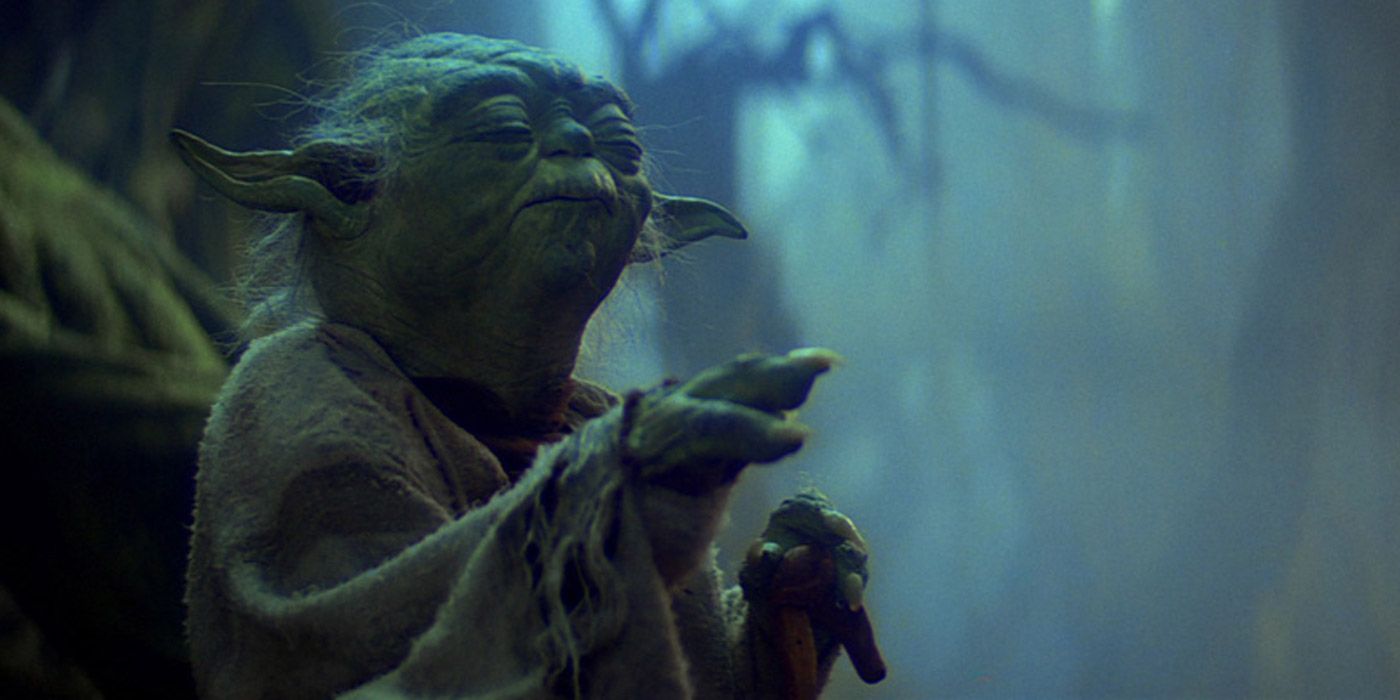
Brain Froud’s wife Wendy got her start as a puppeteer and sculptor when she was invited to work on The Dark Crystal.
Seeing her skill and talent, Jim Henson pulled her off the movie so that she could work on another film that would soon become a mega box office hit.
“Well, when George Lucas was getting ready to make The Empire Strikes Back, he approached Jim because he knew he wanted to have some sort of puppet, and Jim loaned him Wendy, who went to work with Frank Oz,” Froud recalled.
He continued:“It was basically a matter of building a puppet around Frank’s hand, snipping foam, [and] trying things out. They showed the prototype to Jim, who approved the final design, and, during shooting, Wendy actually operated the ears!”
There Are Scenes That No One Has Ever Seen
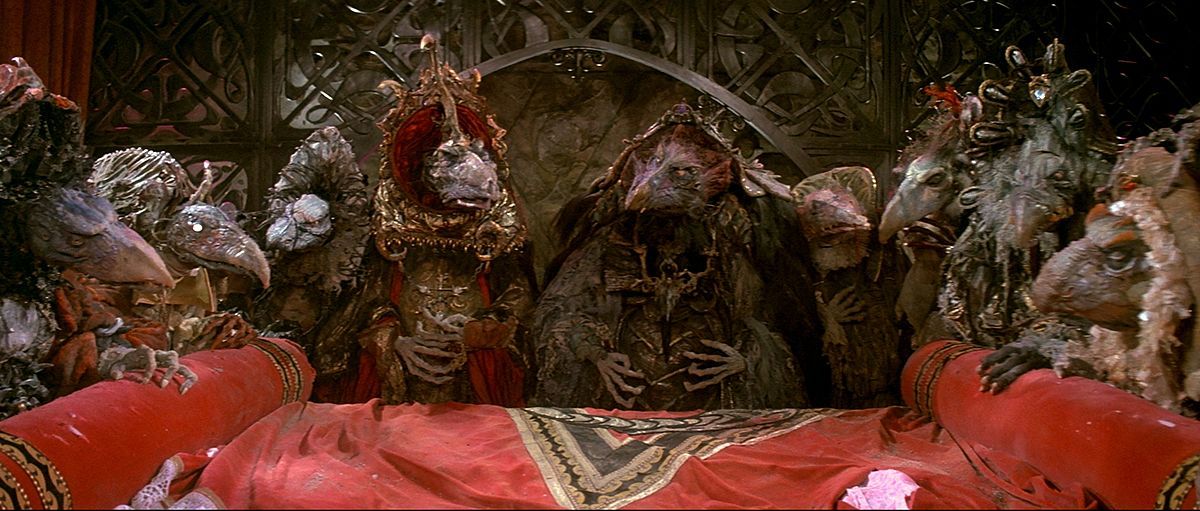
With most movies, there are scenes that do not make it in to the final cut.
This may be because certain scenes don’t flow with the rest of the movie or because there is not enough time.
Other times, it is a matter of trying to achieve a certain rating.
Whatever the case, there are always deleted scenes, and most of the time we have access to them through Youtube and Blu-Rey special features. The Dark Crystal is no different.
However, somewhere out there on an editor’s floor, there are scenes that fans have never seen.
“I think that some footage hasn’t been seen,” Frank Oz recalled in an interview. “There was a scene… I think it was a funeral scene. I think it was a scene when the Emperor [passed away], there’s a funeral scene, rather a funereal walking scene of the Skeksis in line.”
It Convinced David Bowie To Be In Labyrinth
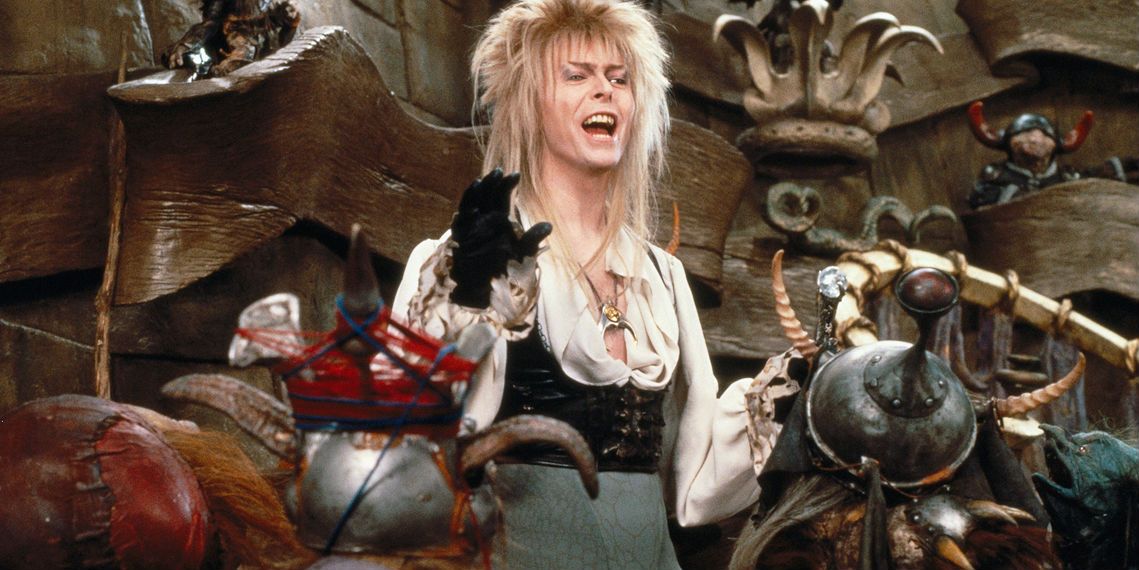
Soon after the release of The Dark Crystal, Jim Henson was hard at work on his next dark fantasy – Labyrinth.
Unlike The Dark Crystal, he wanted to have some star power behind his next project. He approached an artist who would fit his vision of a dark musical fantasy, Ziggy Stardust himself: David Bowie.
It didn’t take too much to convince Bowie to agree.
“He first brought me the concept on the 1983 tour that I did in [the U.S.] and asked me if I’d consider doing the part,” said Bowie.
“And he showed me Brian Froud’s artwork, and he showed me a copy of The Dark Crystal, which I found a fascinating piece of work,” Bowie stated.
He continued: “And I could see the potentiality of making that kind of movie, with humans, with songs, with a more of a lighter comedy script.”
There Was Almost A Sequel
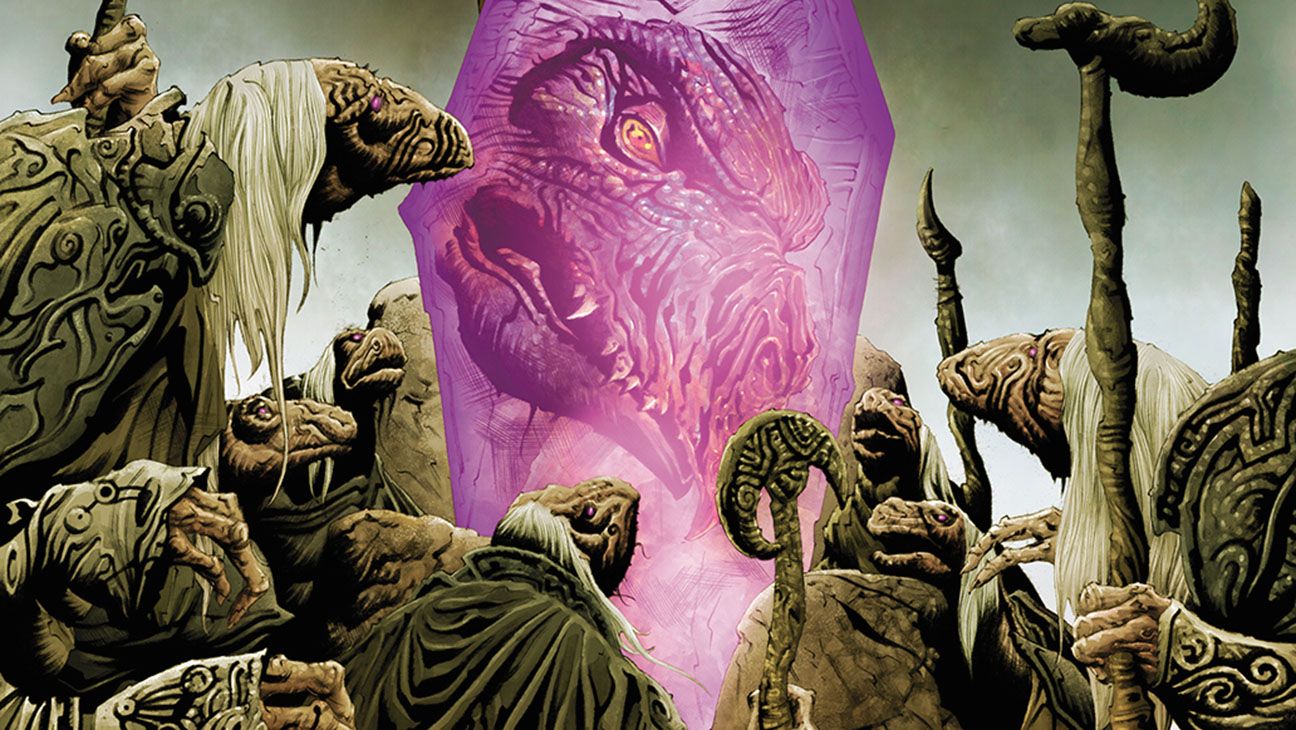
In 2006, producer Genndy Tartakovsky (Dexter’s Laboratory, Samurai Jack, and Star Wars: Clone Wars) attempted to make a sequel to The Dark Crystal.
He even had David Odell retuning to write the screenplay based of previous concepts discussed during the original movie.
“[David Odell], who wrote this film with his wife, is the original writer of The Dark Crystal, and he had discussed this sequel concept with Jim [Henson],” Lisa Henson, Jim Henson’s daughter who was also producing, said. “They didn’t get too far into it, but [Odell] had a pretty good memory of the basic bones of the sequel idea.”
Unfortunately, the movie never got off the ground, but they did turn the unused script into a 12 issue comic book called The Power of the Dark Crystal.
The Skeksis Almost Had Their Own Language
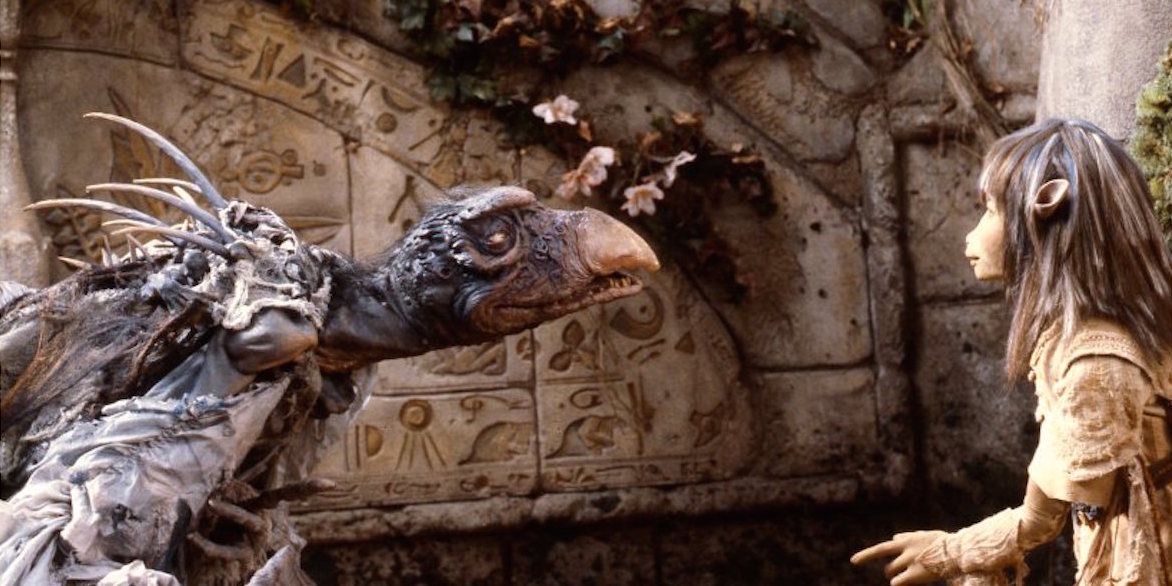
In the original inception of the movie, English wasn’t spoken very often. The Skeksis had their own language that linguist Alan Garner helped the writers to come up with.
A modified form of Ancient Egyptian was used for Skeksis in the first draft of the movie. However, test audiences gave poor reviews of the movie and hated having to guess what they were saying.
This was why they had to later remove the language and dub in English.
The Podlings were able to keep their own language, however, which is a version of Serbo-Croatian.
Many who speak Polish or Russian can recognize words when they speak. The Podlings are similar to Minions in that they mix gibberish with real languages.
Each Skeksis Required Six Puppeteers
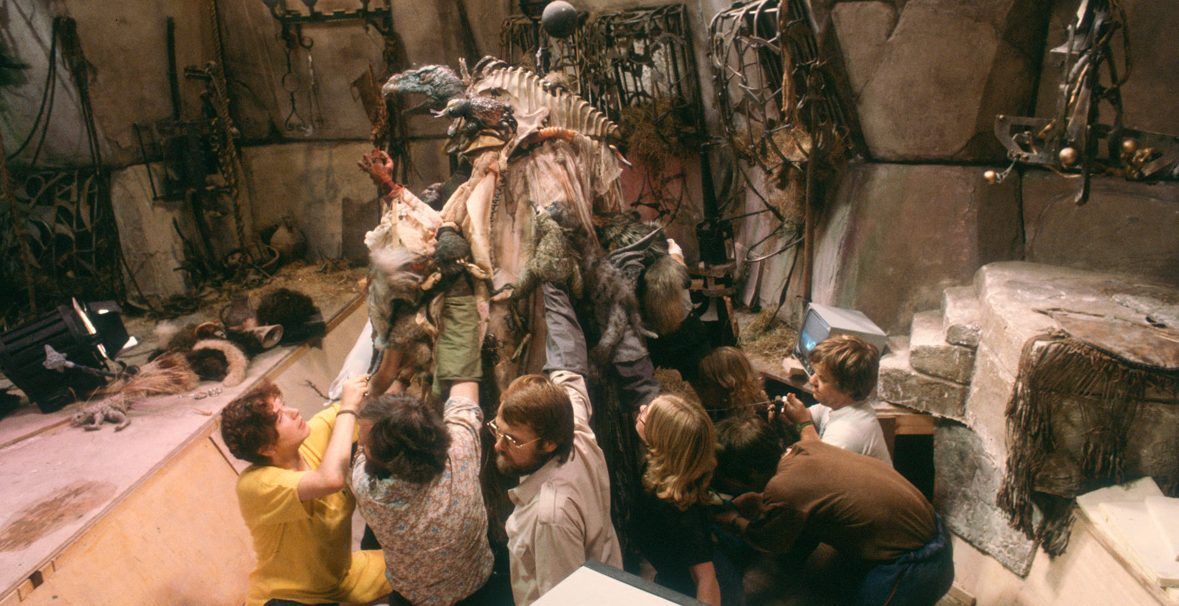
Today, when a studio creates a creature on set, it will either be a ball on a stick or an actor wearing a motion capture suit. Later, it is rendered through various programs and a CGI creature is born.
However, in the ’80s, this kind of technology did not exist.
The large and heavy puppets that exist in The Dark Crystal were all tangible, physical creations and each took multiple performers to control. For example, the large and villainous Skeksis took six puppeteers.
Two puppeteers where stuffed into each Skeksis, while four more controlled varies parts underneath.
It took whole teams to bring these creatures to life, employing a physicality that is slowly becoming extinct in the modern era of movie making.
Skeksis Were Modeled After The Seven Deadly Sins
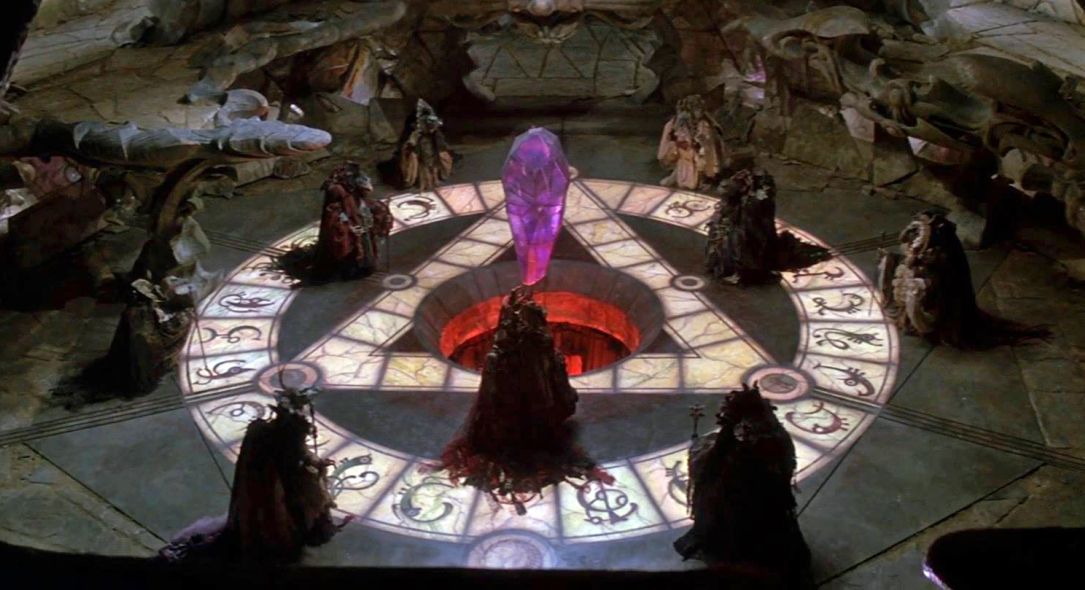
Skeksis are the physical embodiment of all that was evil in the UrSkeks, which were all powerful beings that presided over the planet Thra.
In the UrSkreks’ attempt to purge themselves of evil, they cracked a magical crystal and split into the malevolent Skeksis and kind, wise Mystics.
The Skeksis are grotesque avian and reptilian-like creatures that ooze wicked design. However, this wasn’t enough for Jim Henson.
Henson wanted to embody the Skeksis with more spiritual elements that denote their malice. Because of this, each one is based off of one of the seven deadly sins.
Woven into their physical appearances are elements of wrath, pride, envy, as well as the other sins.
This subtle reference in their appearance helped cement their malevolent nature into audiences’ subconscious.
It Took 5 Years To Make
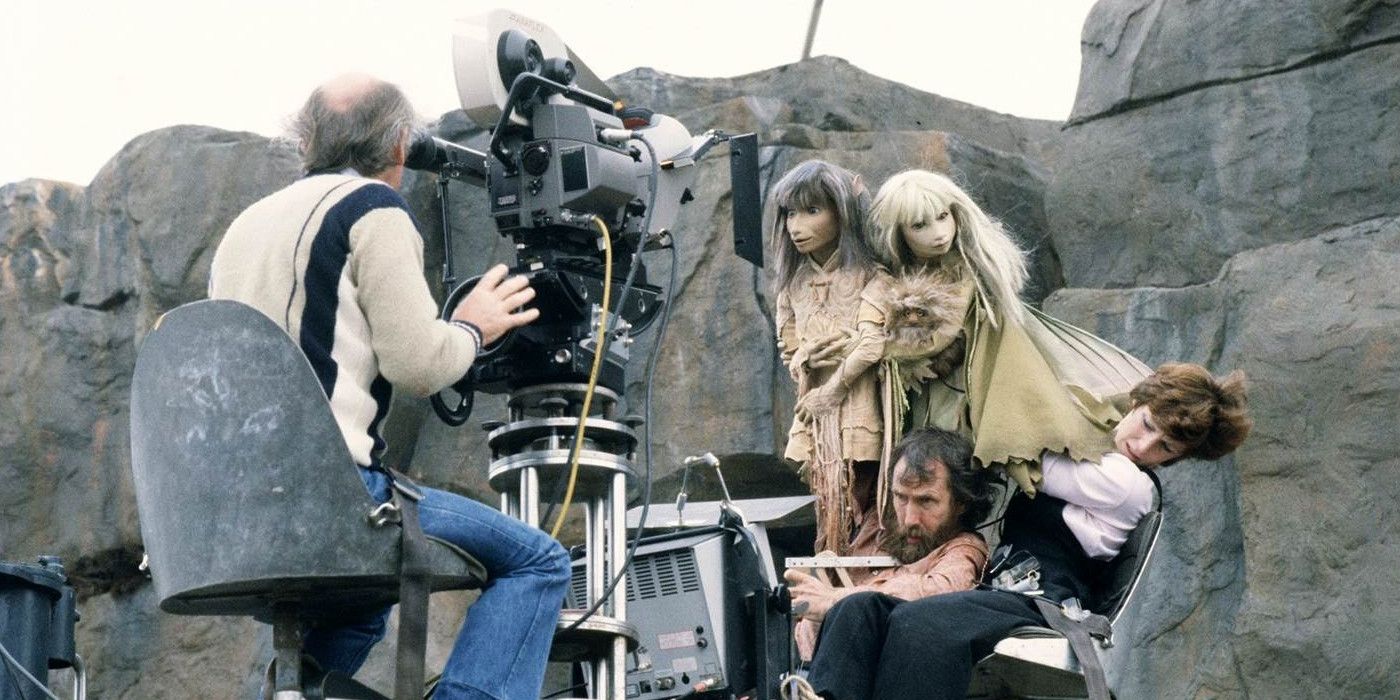
On average, most movies take about 1 to 2 years to make when you add up all of pre-production, shooting, and post-production.
For such an ambitious movie like The Dark Crystal, however, five years were needed to create the film.
When asked what it was like building the puppets, Brian Froud said, “Well, Dark Crystal took five years to make, if that gives you any indication Labyrinth took three.”
He continued: “We were really working at the forefront, I think, we were pushing what was possible as far as radio-controlled puppetry. We used to call them ‘super puppets’ because that’s what they are, really.”
Henson’s and team had the odds stalked against them as they had to fabricate a whole world and the “actors,” while most movies only have to worry about sets.
Test Audiences hated it
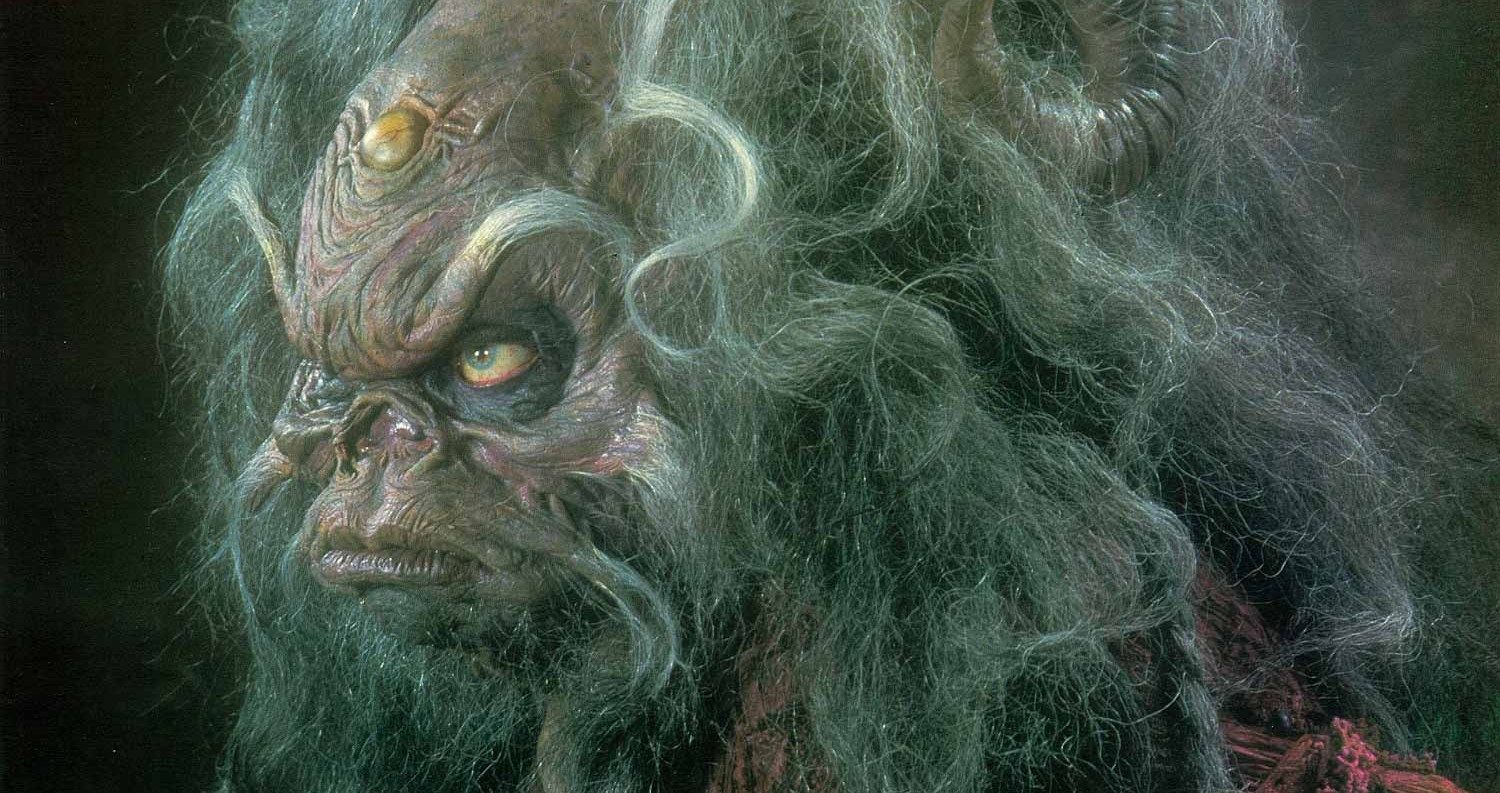
After working on his inventive passion project for five years, Jim Henson was ready to show his art to a test audience.
Their reaction was incredibly disappointing to him, however, as most of them hated the movie.
Although the visuals and effects were dazzling, the audience found the story confusing and had a hard time following what was being said because of the Skeksis’ original language.
Henson was a man of vision and fought hard to not compromise or change anything at the whims of investors.
However, an audience holds a lot of power. Reluctantly, Henson approached screenwriter David Odell to pen new dialogue for the Skeksis in English.
The new dialogue was dubbed in and the second screening yielded a most positive reaction, with many viewers saying that it was “…a bit better.”
Jim Henson Spent $15 Million Of His Own Money To Buy The Movie From The Studio
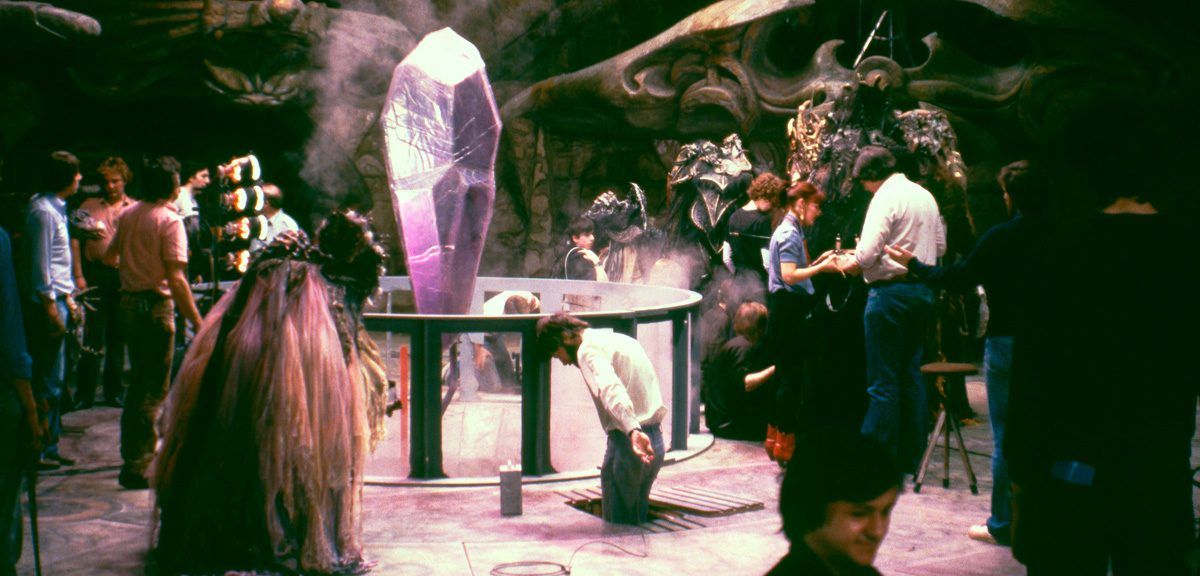
ITC Entertainment was the production and distribution company what was working with Henson on The Dark Crystal.
When the movie was ready to gear up for release, there was a delay because the company came under new management and was now owned by Robert Holmes à Court.
After test audiences had negative reactions to the film, mostly because of the language of the Skeksis, Holmes à Court grew leery of the movie’s potential and wanted to make major changes to it.
Disappointed, yet understanding, Henson changed the language of the Skeksis. However, when the investors and Holmes à Court wanted to cut out the Mystics in favor for the Skeksis, Henson wouldn’t bulge.
He wanted to maintain full control of the movie and therefore he bought the film back for $15 million using his own cash just so he could keep the integrity of the story.
Jim Henson Wanted To Scare Children
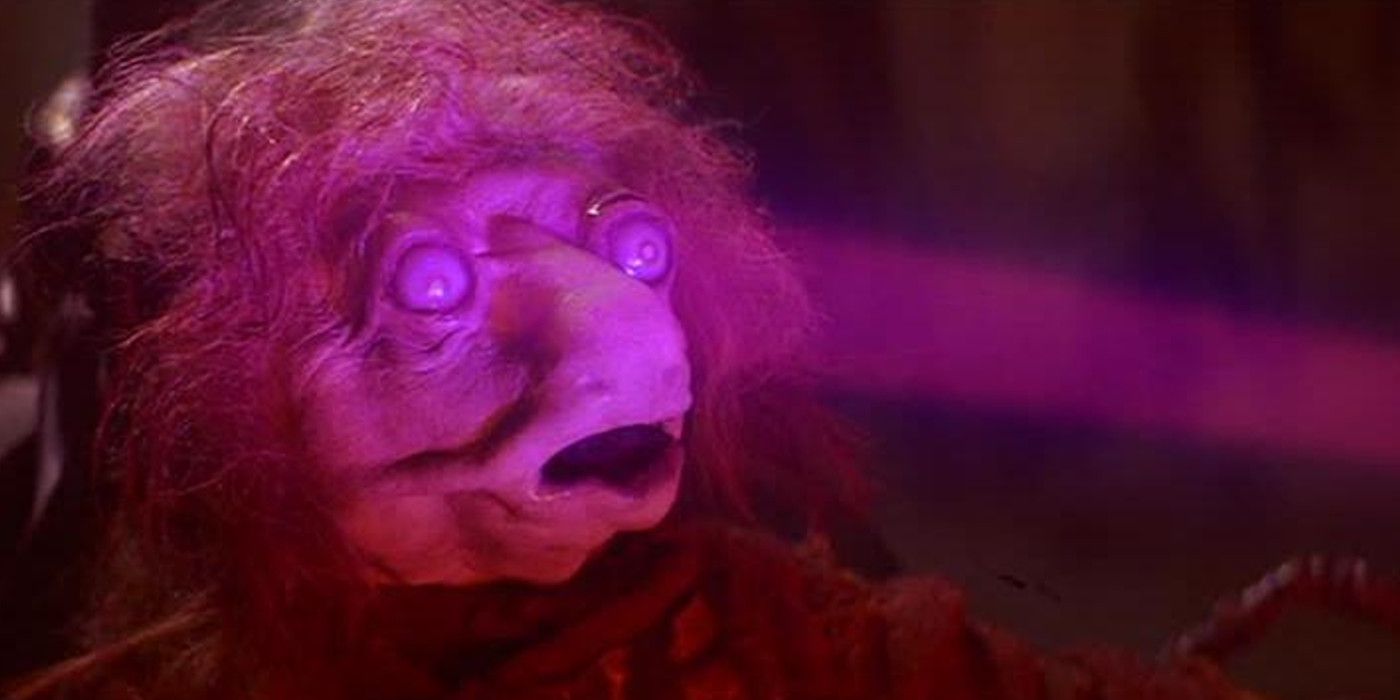
During the ’80s and early ’90s, there seemed to be a slew of children’s movies that where quite scary.
Return to Oz, The NeverEnding Story, The Witches, and The Monster Squad are just a few movies that would go on to both terrify and excite many children.
However, Jim Henson and The Dark Crystal helped to start this trend. Henson felt that fear was a good thing for kids.
According to Frank Oz, “He thought it was fine to scare children. He didn’t think it was healthy for children to always feel safe.”
He did a good job of that. The movie did not do well at the box office because parents were leery of showing their kids such disturbing images.
Henson would double down on this idea by inviting artists like Alice Cooper on The Muppets at the height of his controversial fame.
It Was The First Live Action Movie To Feature Only Puppets
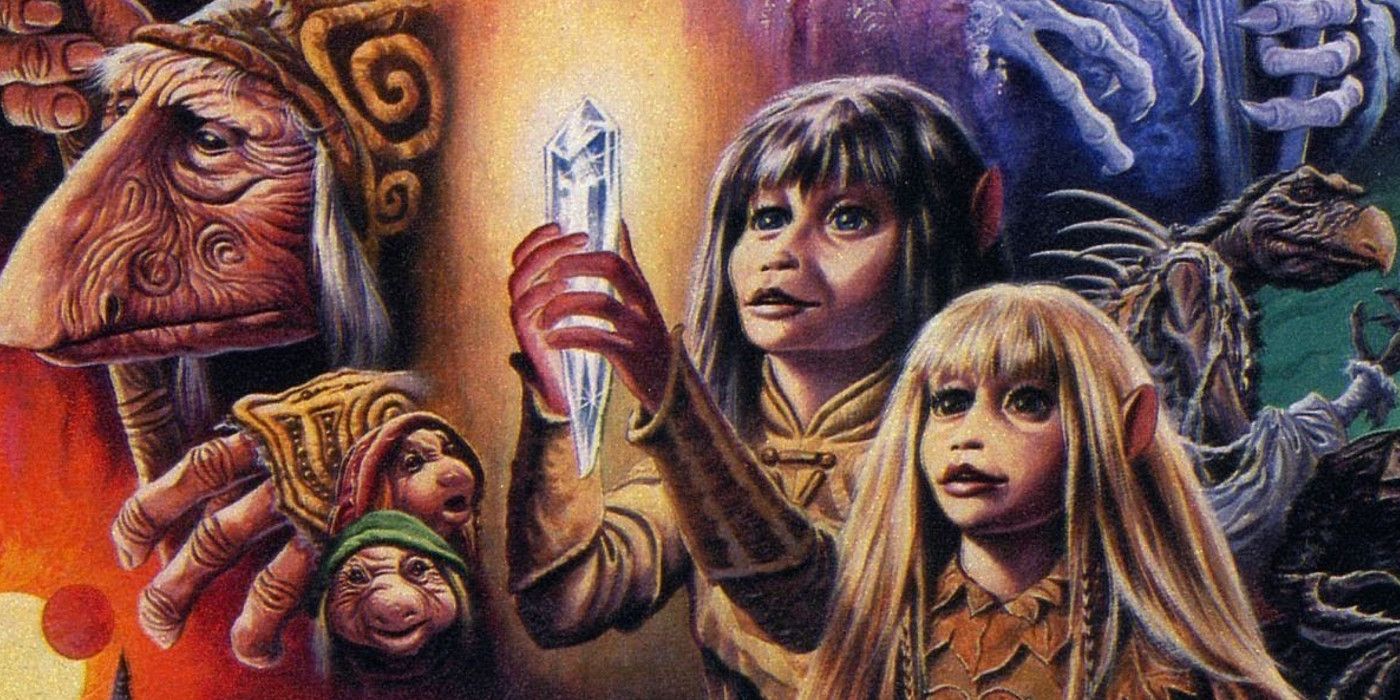
Up to this point, Jim Henson had already made a feature length Muppet movie and several TV shows. Hollywood had many live action movies and shows that featured puppet or Claymation characters.
However, there had never been a complete live action movie that only starred puppets, as this was quite an undertaking.
The Creature Shop, a production company that specialized in puppeteer work, not only had to create various characters and species for the movie, but it also had to design an entire world.
The company had to create magnificent sets and landscapes that give life to the planet Thra.
While movies like The Muppets had at times existed in the real world where camera angles were all that was needed to bring them to life, The Dark Crystal had to showcase a whole different reality that didn’t include any humans.
There Was A Dark Crystal Fashion Collection
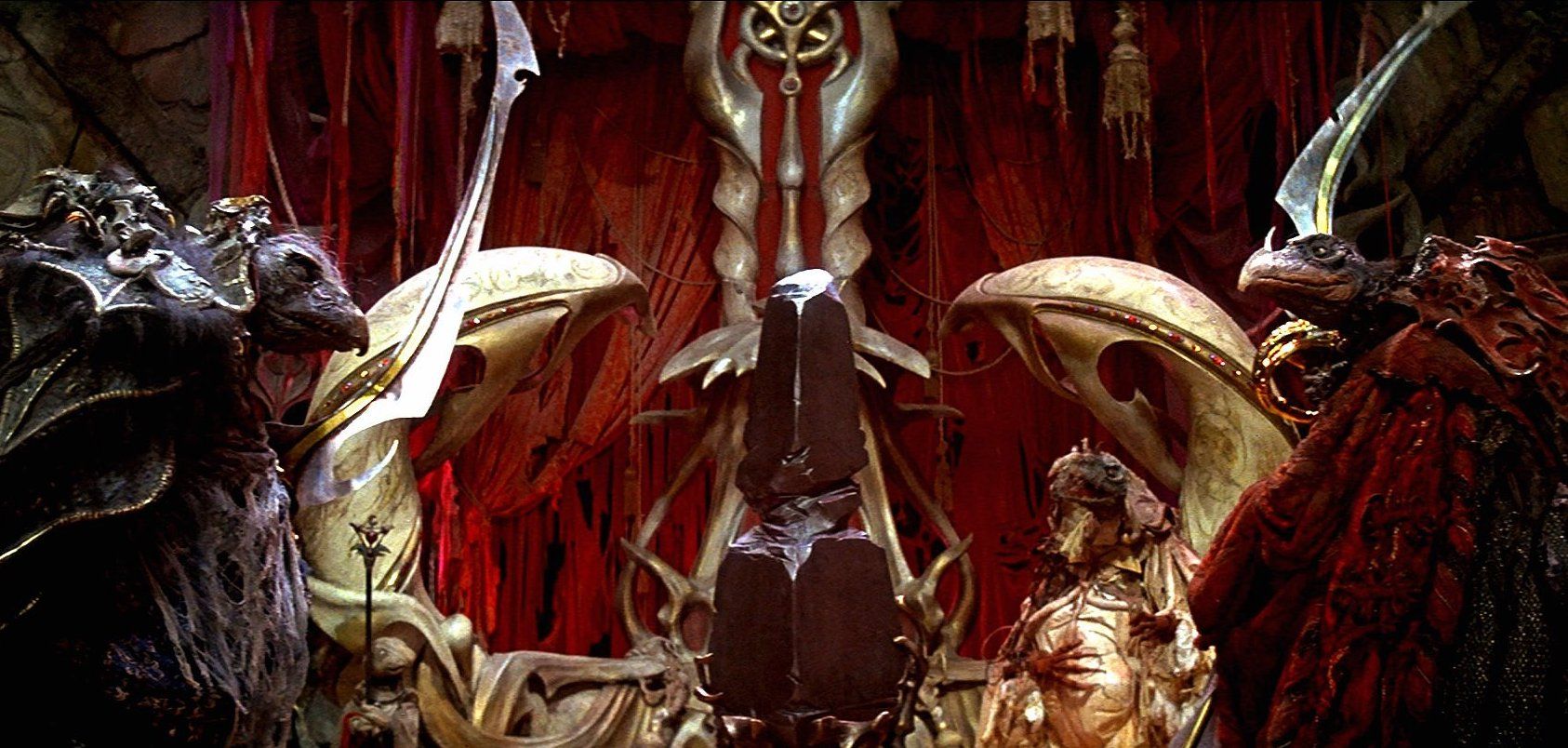
During the five years it took to make the movie, Jim Henson wanted to showcase the talent and craftmanship that had gone in to it.
He commissioned his design team to come up with a forty-piece fashion collection that incorporated the style and imagination of the movie.
Henson had “a desire to see the beauty of the film transposed into another creative medium, and to acknowledge the strong influence that film has always had on fashion.”
The limited-edition collection was available exclusively through Liberty’s in London, Henri Bendel in New York, I. Magnin in San Francisco, and Sakowitz in Houston, with prices ranging from $500-$1800.
Although there was a lot of attention given to the idea and collection, they did not sell well.
Seth Speaks Was A Required Reading For The Screen Writers
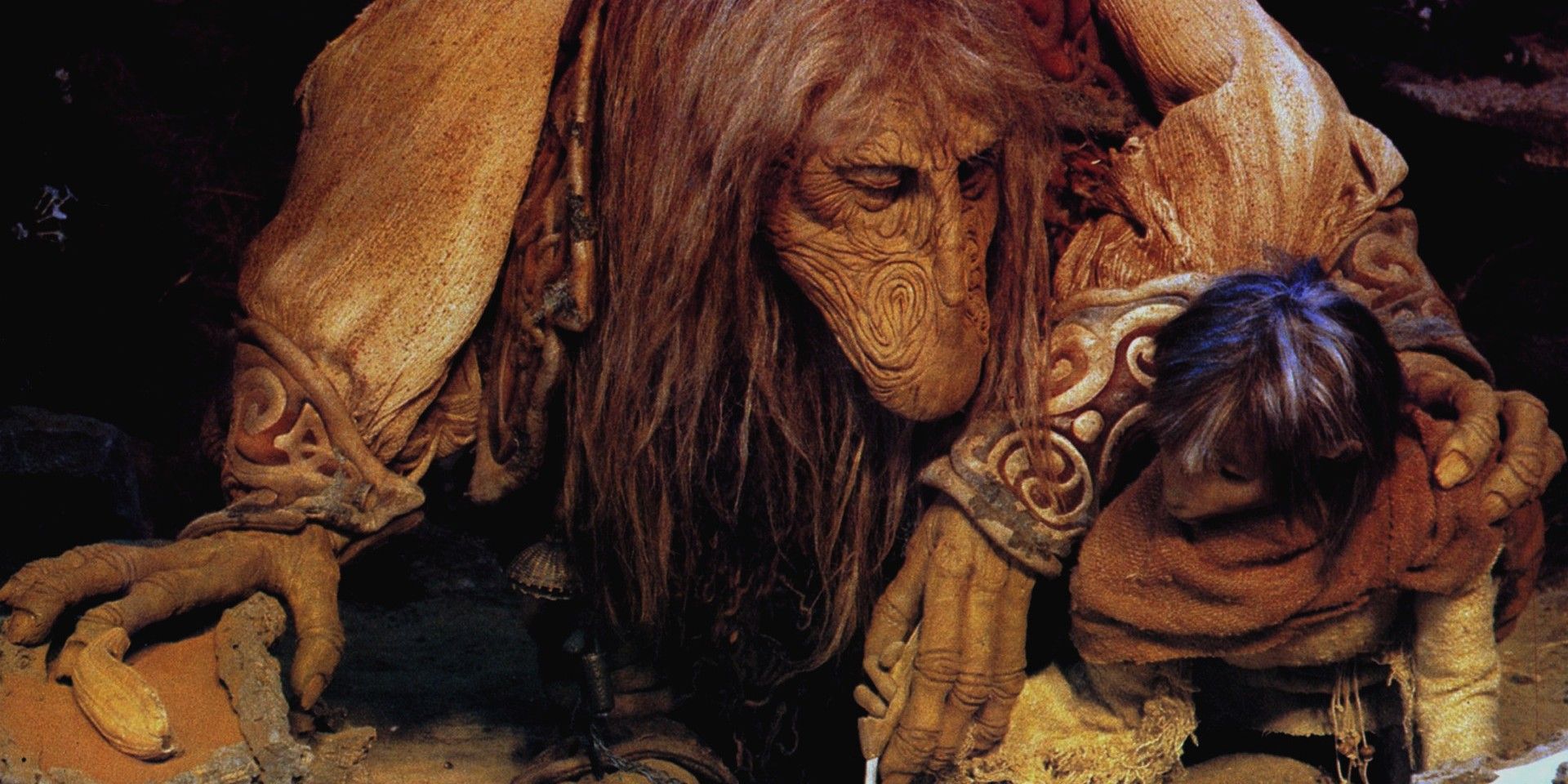
One of the things that made Jim Henson’s style of storytelling unique was how he wove a sense of spirituality into his stories.
The Dark Crystal is the most blatant example of this.
In an effort to have the writers understand mysticism and spirituality, Henson required that they read Seth Speaks by Jane Roberts.
Jane Roberts was a fantasy author before she began communicating with a multidimensional known as Seth.
One of the writers, David Odell remarked that, “The spiritual kernel of The Dark Crystal is heavily influenced by Seth… Jim admitted that he didn’t understand the book himself, and that everyone would understand it — or not understand it — in their own way.”
“But he thought it opened up a whole different way of looking at reality, which I think was one of his goals in making The Dark Crystal,” Odell said.
Author A.C.H. Smith Hated The Podlings
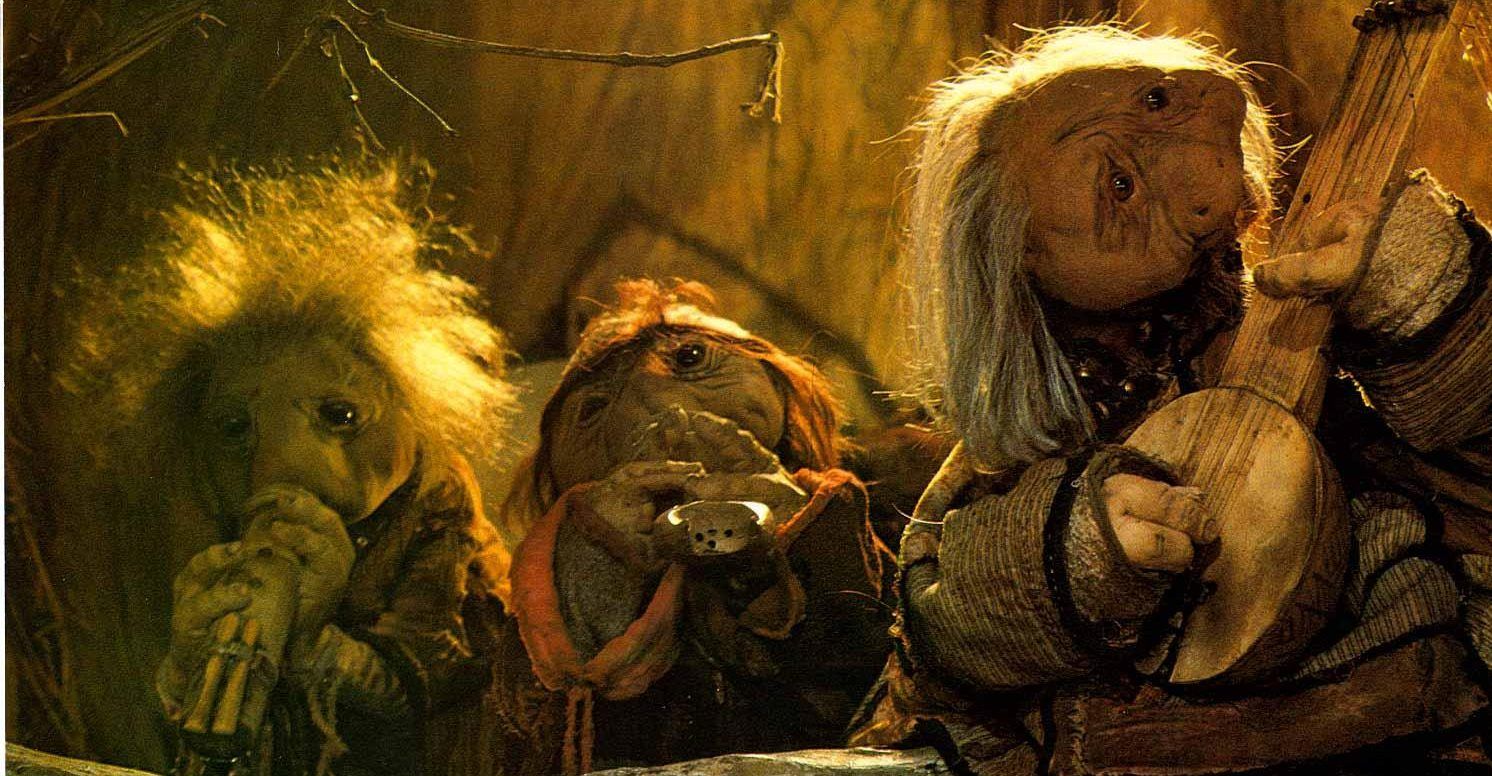
Popular movies are often adapted into books. Most of the time, these adaptations are 99% percent the same as the movie, with a few minor differences here and there.
Jim Henson was very invested in the novelization of The Dark Crystal and wanted to make sure that it was done right.
After meeting with several potential writers, he chose to work with A.C.H. Smith.
Smith and Hansen where on the same page about most of the story except for one thing: the Podlings. Smith thought that they were boring, and the first chance he had, he disposed of them in the book.
He had a sack full of them squished by a Skeksis so that he no longer had to write about them.
This did not sit well with Henson, however, and the two met personally to discuss it.
After this, Smith reluctantly gave in and included their story in the book.
The Land of Gorch Was An Inspiration
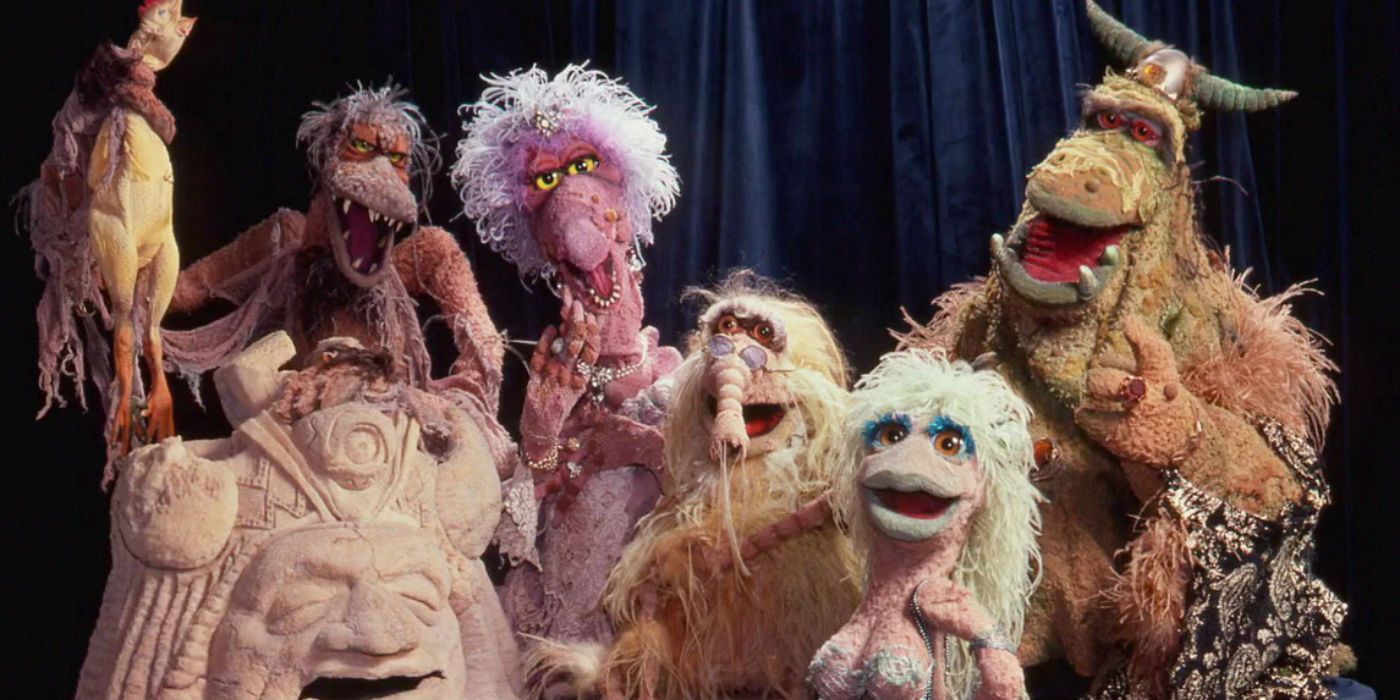
Jim Henson left a legacy of iconic shows and movies. The Muppets, Fraggle Rock, Sesame Street, Labyrinth, and of course, The Dark Crystal are some of the biggest children’s movies in the ’80s and ’90s.
However, some his first creations premiered in the most unlikely of places, such as Saturday Night Live.
Henson and his team where part of the very first season of SNL. On the show, they had a weekly sketch called The Land of Gorch, which involved a raunchy, irreverent group of puppets that made crass jokes and talked about their intimate experiences.
They sketch lasted a year and never returned to the show.
However, the somewhat grimy and gritty designs of the characters helped influence the aesthetic of The Dark Crystal. It is nice to know that all of the work that went into the failed comedy sketch proved valuable in the end.
Jim Henson Came Up With The Idea While Snowed In
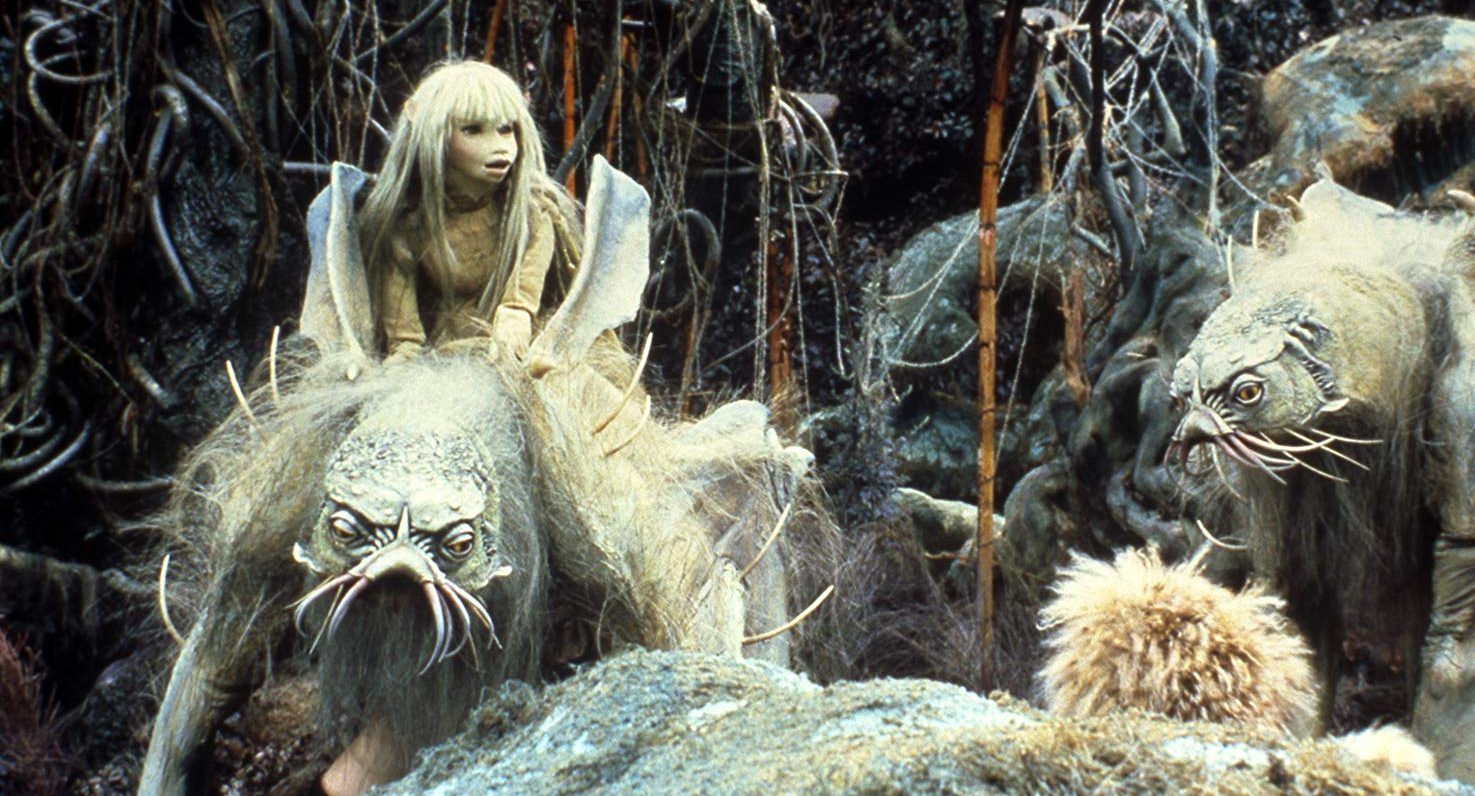
Jim Henson was traveling with his daughter Cheryl to London from New York when the blizzard of ’78 hit.
It took them three hours to get “from Kennedy airport to a Howard Johnson’s hotel just a few miles away.” They were snowed in for 72 hours with nothing to do.
Henson was always working on new ideas and would often doodle on note pads so that he could revisit his thoughts later.
Since he and his daughter were snowed in for so long, Henson began to dream up a new world and its possible inhabitants.
“By the time we reached London, he had an outline for what was to become The Dark Crystal,” Cheryl recollected.
Five years later, and with the help of dozens of creators, those doodles become a reality.
Jim Henson Wanted To Prepare audiences Before the movie Was Released
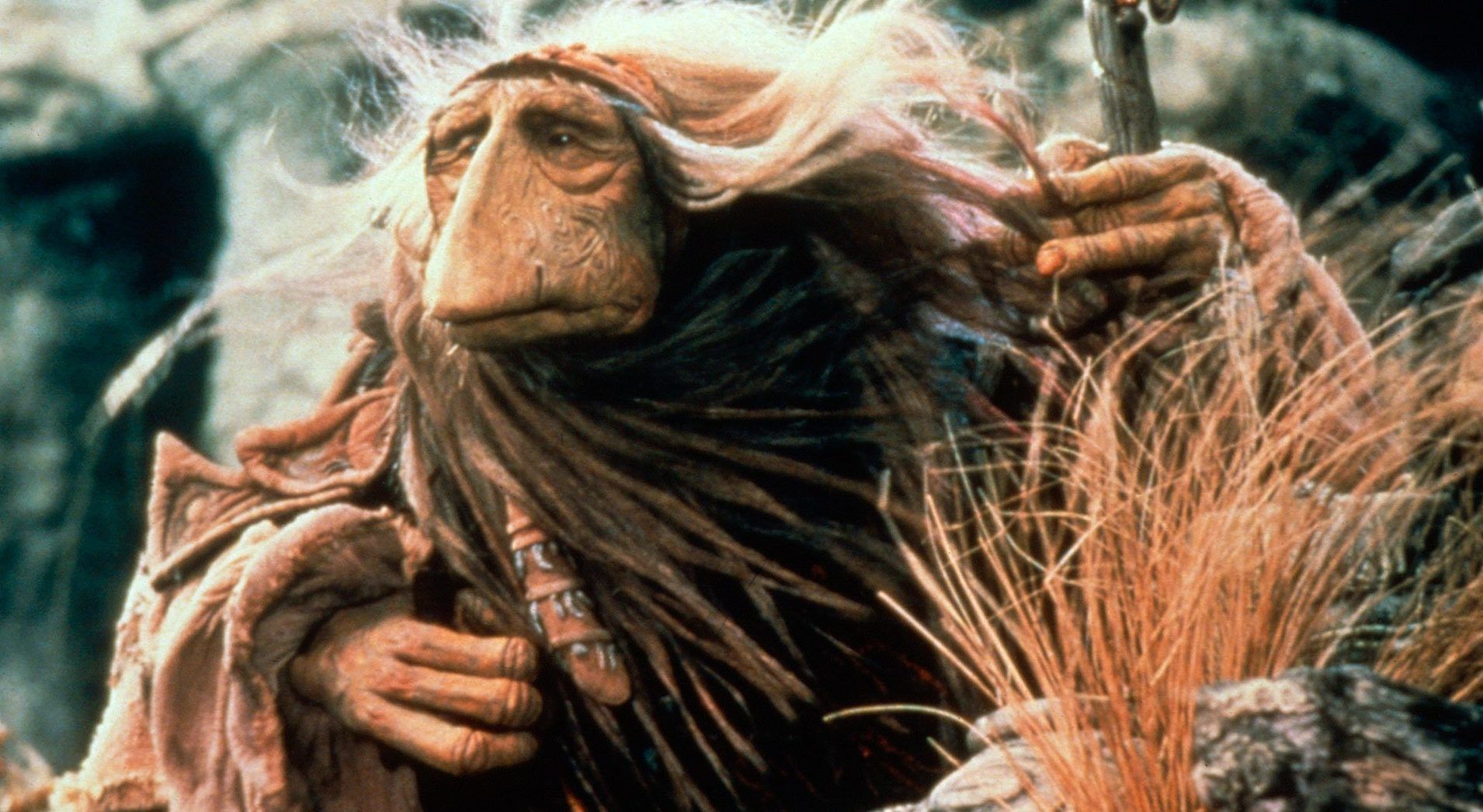
Jim Henson built his career on family-friendly children shows and movies. He was known for Kermit the frog and Miss Piggy.
Because of this, he knew that the dark story of The Dark Crystal would be a shock to the public if they did not have any warning.
Even though it was still a children’s movie, it would have disturbing imagery and would tackle deep subject matter.
Henson always respected his young audience and therefore believed that they would be able to understand and handle more than what society thought they could.
To prep audiences – mostly parents – on the overall feel and direction of the movie, Henson displayed sets and puppets at the Lincoln Center in New York City.
This gave the public the opportunity to see and examine the artistry and effort that went into making the movie.
It also allowed the public to prepare mentally for the movie.
Jim Henson Chose Brian Froud To Design The Movie Based Off Of One Picture
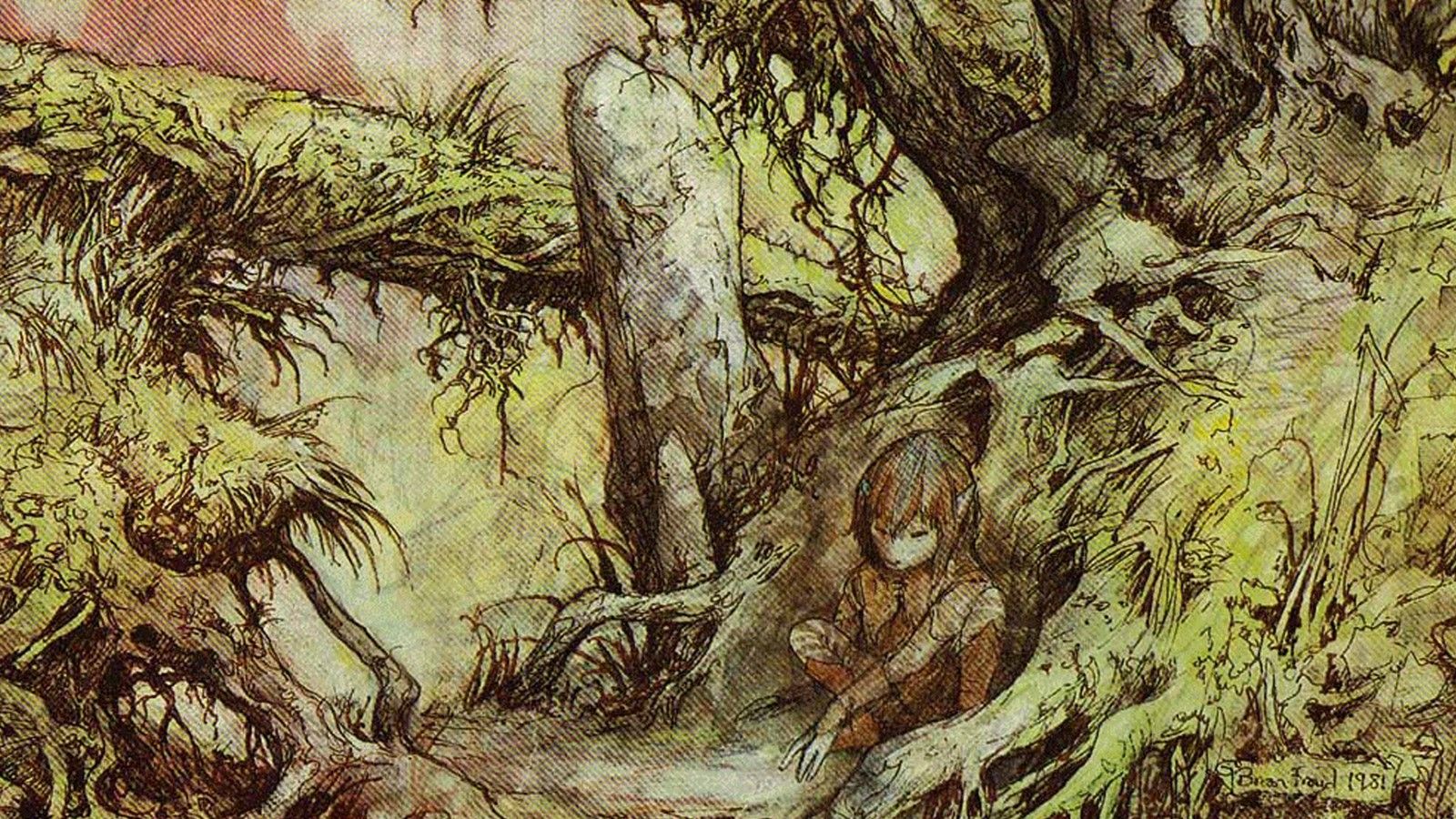
Brian Froud was the conceptual and costume designer for both The Dark Crystal and Labyrinth.
His style and artistic vision helped create some of the most fantastical worlds that exist. However, it never would have happened had Jim Henson never accidentally discovered Froud.
“I had a job as an illustrator, and I wanted to change the direction of my work. I moved to the country, and immediately I started to paint fairies and trolls,” Froud said.
“Jim Henson saw one of my paintings on the cover of a book. He had in the back of his mind an idea for a film and asked me if I would define it,” he stated.
Based on one painting, Henson saw all that he needed to see in Froud and recruited him for some of the most ambitious movies of the ’80s.
It Was Frank Oz’s directorial debut
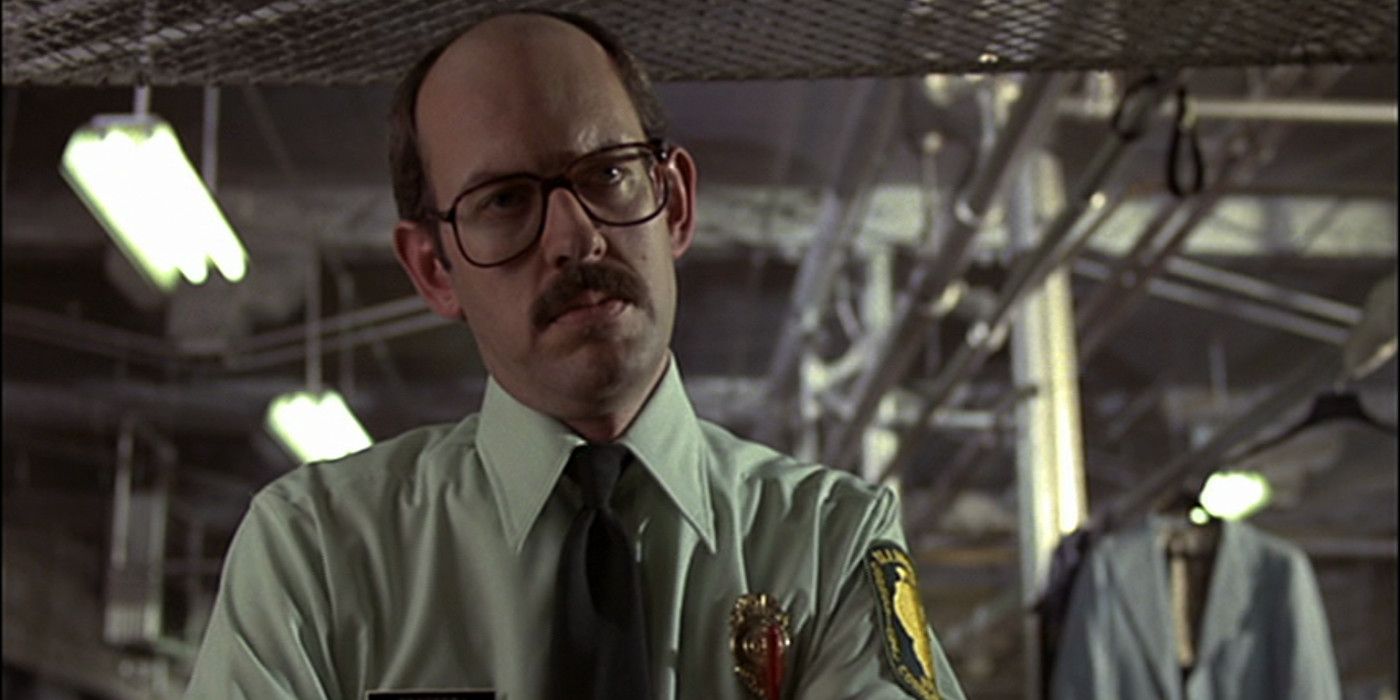
Frank Oz is one of the earliest collaborators to have worked with Jim Henson.
As a puppeteer, Oz voiced Miss Piggy, Fozzie Bear, Cookie Monster, Grover, and Yoda, among many others. As a director, he gave us The Little Shop of Horrors, Death at a Funeral, and What about Bob.
Oz is one of the greatest disciples of Henson’s. Not only did Henson give him his start in Hollywood, but he also gave him his first directing credit.
According to Oz, “…We were on a plane trip to London for something else, and [Henson] asked me if I wanted to co-direct with him. I said, ‘I never directed, Jim. Why do you want me?’ And this was typical Jim, he said, ‘Because it would be better.’ He didn’t care about credit at all — he cared about how good the movie was.”
—
Can you think of any other secrets behind the making of The Dark Crystal? Let us know in the comments!




